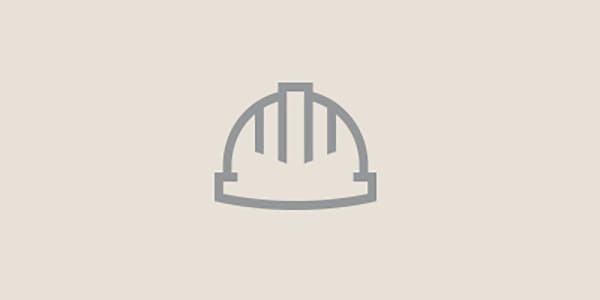- Home
- Company
- Health and Safety Community
- How to Reduce Dust
How to reduce dust by applying the STOP principle
Learn how to protect your people from the dangers of dust exposure

In the article Why you should care about dust we learned about the potentially dangerous properties of dust and its effects on health, safety and productivity. Let’s now look at what can be done to reduce exposure to dust.
There’s a maximum allowed exposure to specific dust types that determines what’s considered safe by legislation. Employers must evaluate if the workplace exposure of dust is below these limits by means of a risk assessment. Based on this risk assessment preventive actions are formulated. Helping to protect people against the risks of dust can be done by applying the STOP principle (see below).
Exposure to dust is highly regulated

Since some dust particles can be potentially harmful, national authorities have set so-called occupational exposure limits (OEL). These values are upper limits that define the acceptable concentration of hazardous dust in the workplace, based on a time-weighted average throughout an 8-hour workday. OEL values exist for specific dust types and depend on their hazard.
For example, if you work with material containing silica, the dust that is set free while you process the material – e.g. from drilling, chiseling, sawing or grinding – will most likely contain respirable crystalline silica dust (RCS). These particles can be especially dangerous as they can go deep into the lung and reach the lung alveoli, where long-term over-exposure can lead to damage to the respiratory system. In worst cases this might result in the disease called silicosis, which is currently incurable.
Because the health effects of hazardous dust can be dramatic, OEL values are established to protect workers. OEL values vary within the European Union. Some countries have put in place more stringent provisions. You should always check with your local authorities to get the OEL values applying to you.
Do you have any idea what these limits mean in practical terms? The truth is, it is a tiny amount – like a small pinch of salt – and weighing less than a 2 Cent coin.
How can I find out if I’m below the exposure limits?
A reliable way to find out where risks from dust exist in your workplace is by systematically measuring it. Dust particles can be measured by using specific sampling equipment and the British Health and Safety Executive published a variety of suitable samplers for such an undertaking.
It might be demanding for employers to implement and execute air monitoring. Therefore, another possibility is to refer to previous measurements and investigation reports. Parties that publish such data can be the tool manufacturer, raw material supplier or research organizations. The German BG Bau provides task-based measurement data collectives as an aid to assessment.
Similarly, US-based Federal Occupational Safety and Health Administration (OSHA) has published Standard 1926.1153, Table 1, which is a list of 18 recommended product solutions and controls listed in the table, reflecting common silica-generating construction tasks with corresponding control methods that OSHA has determined are effective.
Once you know the dust exposure at your workplace, the risk assessment is your process tool to define appropriate protective measures.
Some general advice on risk assessments
Risk assessment is the process of evaluating risks to workers' health and safety from workplace hazards and defining what preventive or protective measures are, or should be, in place to control the risks.
EU-OSHA provides several resources with the aim of supporting companies in conducting risk assessments. General steps for risk assessment include:
- Step 1: Collecting Information
- Step 2: Identifying hazards
- Step 3: Assessing risks arising from hazards
- Step 4: Plan actions to eliminate risks
- Step 5: Document risk assessment
Based on material from SUVA (a public-sector insurer in Switzerland) here are some guidelines for assessing health risks when dealing with dust specifically:
- Have you clarified comprehensively whether there are workplaces in your company with exposure to hazardous dust?
- Are you aware of the hazardous properties of the dust that occurs?
- Are you aware of the dust concentrations in the various situations at the workstations?
- Are the occupational exposure limit values (OEL) met at the workplace? Exceeding the limit values means that protective measures must be taken
To deal with the risk of dust exposure we apply the STOP principle. This principle is in accordance with the prevention methodology of leading European institutions and authorities. By the way, this is also the principle that Hilti uses when training our partners about health and safety!
STOP PRINCIPLE AS A GUIDE TO CONTROL DUST

The naming STOP defines the sequence of controlling risk. Here’s what that means in detail:
Substitution is the elimination of the risk by using safer alternatives. By doing so the root cause of hazards can be avoided.
Technical measures are machinery, tools or technologies to reduce dust in the air, to minimize the dangerous effects of dust for people.
Organizational measures are made possible due to different working methods and improved work organization.
Personal protective measures are needed where risks remain. The user is exposed to this risk and without these protective measures there can be health hazards! So PPE – personal protective equipment – is required to cover the remaining risks.
Practical advice to control dust – STOP principle in action
In this article we shared background information on how to control dust exposure.
Since the mid-90s Hilti has been committed to delivering dust removal solutions to the construction industry. Our next article Control dust with expert knowledge from Hilti explains how our dust systems are developed and how they are unique.




